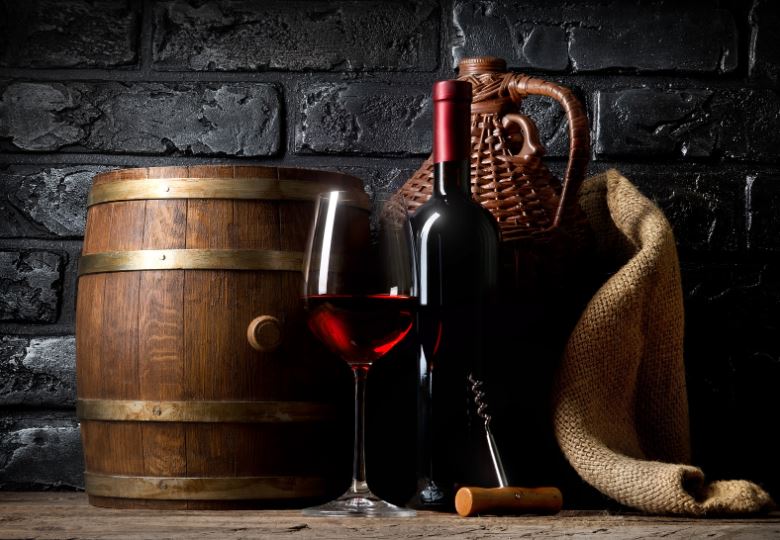Americans consumed 966 million gallons of wine in 2018. If you’re a wine enthusiast, you know the joy that a fantastic bottle brings to any event. Pulling the cork is an expression of love and an appreciation of the craft.
Great wine isn’t cheap. If you store and age these wines improperly, you risk them turning and losing money.
Are you thinking about building a wine cellar to protect your investments? Proper storage is a good idea for anyone who enjoys fine wine, but how do you do it?
Read on to learn how to build a wine cellar.
Table of Contents
Find the Right Location
Wine is a delicate product. Experienced drinkers know the grapes take on the terroir characteristics where they’re grown.
Cabernet Sauvignon grown in Mount Veeder tastes different than Cabernet grown in Margaux.
The same can be said of wine once it’s in the bottle. Improper storage can cause your wine to turn or degrade, leading to a vast difference in color and taste.
Consider these factors when you’re planning your home wine cellar design.
Sunlight
Sunlight degrades wine. Though amber bottles protect the wine from UV rays, they don’t prevent long-term damage.
You must find a space in your home away from the sun’s rays. A basement is often the perfect spot.
Vibrations
Wines throw sediment as they age. This sediment is a tannic acid that solidifies and separates from the wine. Even the slightest vibrations interrupt this process.
When sediment can’t separate from the wine, the acid levels drop. Low levels of these acids change the flavor of the wine.
For this reason, find a location away from vibrating appliances like washing machines.
Seal the Cellar
Cellaring wine means eliminating all harmful environmental factors. Eliminate all drafts that compromise the temperature and humidity levels.
- Concrete must be treated with a chemical sealant
- Seal the grout if you tile the floors
- Seal any other cracks or gaps
Insulate
Insulation is the key to the temperature control you need for your cellar. If you’re designing a wine cellar as a new room, follow these guidelines:
- Build the walls with treated 2X6 studs
- Use batt R-30 insulation on the exposed ceiling
- Install batt R-19 insulation between 2X6 studs
- Use blown-in insulation on existing rooms

Vapor Barrier
A vapor barrier is a plastic sheet installed behind the exterior wall insulation. This barrier prevents the migration of water vapor that contributes to mold and mildew growth.
Install your vapor barrier on the “warm” side of your cellar walls. The “warm” side is the side of the wall that faces the most heat and moisture.
If you live in a hot climate, the warm side is on the outside. The opposite is true of colder locations. The interior surfaces will always be the “cool” side.
Excess moisture and mold growth will permanently damage the labels of your bottles. It may also degrade your wine during long storage periods.
Lighting
Correct wine cellaring means eliminating harmful UV rays. You also need to install the proper indoor lighting. Though darkness is best, you also want to show off your collection!
Avoid fluorescent and other incandescent lighting fixtures. They emit a high amount of UV rays that damage your wine. For cellar lighting, opt for the cool tones of LED lights.
Cellar Door
Your cellar door adds to the insulation and should help seal your cellar. Use an exterior door at least 1 3/4 inches thick. For glass, make sure the door is triple-paned and tempered.
Apply weatherstripping to prevent any outside air circulation.
Humidity and Temperature Control
The ideal wine storage temperature is between 57°F and 60°F. Temperatures over 70°F cause the wine to age prematurely and spoil.
The perfect relative humidity level for your wine cellar is 60%. At this level, your wine labels will stay intact, and your corks won’t dry.
Separate AC Unit
Your central air conditioning won’t provide enough cool air during the summer months. You’ll need to install a separate mini-split AC unit designed to cool one room.
These ductless units provide adequate temperature control without taxing your central unit. They also help mitigate humidity levels. To install, consult a professional like https://www.schneidermechanical.com.
Humidifier/Dehumidifier
What you need to keep your cellar at a consistent humidity level depends on where you live. You’ll need to decrease humidity levels in tropical climates and increase them in arid climates.
If you live in an area like the northeast, you’ll need to do both.
Rack Installation
It’s important to know that you must store wine bottles on their side. Keeping them upright dries the cork and damages the wine.
Keep this in mind when choosing or building your racks.
Finishing Touches
The last step for how to make a wine cellar depends on how you want to use your wine cellar. Will it be a small space to keep bottles? Will it be a large room to entertain guests?
- Finish the walls with water-based non-VOC paint
- Avoid covering the floor with rugs or carpet
- Wood and stone add an elegant look
- Tables and chairs made from wine barrels keep a consistent theme
- Glassware racks add a unique touch
How to Build a Wine Cellar
Wine can be a serious investment, but improper storage can ruin it. Rare and expensive wine that turns during the bottle aging process is a waste of money.
If you are serious about wine, you have to store it right. Follow these tips for how to build a wine cellar to help your first-growth Bordeaux reach maturity.
Do you need more home improvement ideas? Check out the rest of our page for the latest trends.

